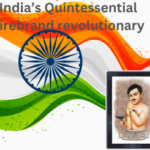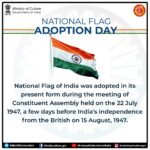GI tag for Basmati rice of 7 states approved

The Intellectual Property Appellate Board (IPAB) has directed the assistant registrar of the Geographical Indications Registry, Chennai, to proceed with registration of a geographical indication (GI) tag for Basmati rice, a special long grain aromatic rice grown in a particular geographical region of the Indian sub-continent, according to the geographical demarcation conducted by the Agricultural and Processed Food Products Export Development Authority (APEDA).
This means seven north Indian Basmati rice-producing states like Punjab, Haryana, Himachal Pradesh and Uttarakhand and parts of Uttar Pradesh and Jammu & Kashmir will get the GI tag. The appellate authority also asked the registrar to reconsider the matter of inclusion of uncovered areas, including Madhya Pradesh, in the area covered under the GI for Basmati. It has also dismissed two petitions from the Basmati Growers’ Association of Lahore, Pakistan, related to the matter.
A GI is a sign, tag can be issued for agricultural, natural or manufactured goods ,products that have a specific geographical origin and possess qualities or a reputation or other characteristics that are due to that origin. A GI registration gives the registered proprietor and authorised users the legal right to the exclusive use of the GI, and no unauthorised person can use the tag. Some of the examples of GI are Mysore Silk, Mysore Agarbathi, Kancheepuram Silk, Orissa Ikat, Channapatna Toys & Dolls, and Coimbatore Wet Grinder. Products sold with the GI tag get premium pricing; It boosts exports; The poor farmers/artisans from the given region have to face less competition from fake guys selling bogus products. Right is enjoyed by a community / association of producers.=community right. Under WTO– Trade related Intellectual property rights (TRIPS), the Member nations have to respect geographical indications
A GI is different from Trade Mark. A Trademark generally refers to a “brand” or “logo be obtained for a business name, distinctive catch phrases, taglines or captions. Product comes from a particular enterprise/company, Right enjoyed by only one person/company=individual right. Can be goods (mobile, PC etc) or service (e.g.music, spa etc.). a trademark can last forever, so long as the owner continues to use the mark in commerce to indicate the source of goods and services. dentifies and distinguishes the source of the goods of one party from those of others
A patent is a limited duration property right or instrument of monopoly relating to an invention, in exchange for public disclosure of the invention. Patentable materials include machines, manufactured articles, industrial processes, and chemical compositions.A patent gave rights To Exclude Others from Practicing ones Invention; It Does Not Give The Right To Use ones Invention.
A copyright protects works of authorship; songs, books, movies, and works of art that have been tangibly expressed in a physical form.
TRIPS BACKGROUND
Ideas and knowledge are an increasingly important part of trade. Most of the value of new medicines and other high technology products lies in the amount of invention, innovation, research, design and testing involved. Films, music recordings, books, computer software and on-line services are bought and sold because of the information and creativity they contain, not usually because of the plastic, metal or paper used to make them. Many products that used to be traded as low-technology goods or commodities now contain a higher proportion of invention and design in their value — for example brand named clothing or new varieties of plants.
Creators can be given the right to prevent others from using their inventions, designs or other creations — and to use that right to negotiate payment in return for others using them. These are “intellectual property rights”. Intellectual property rights are the rights given to persons over the creations of their minds. They usually give the creator an exclusive right over the use of his/her creation for a certain period of time.
They take a number of forms. For example books, paintings and films come under copyright; inventions can be patented; brand names and product logos can be registered as trademarks; and so on. Governments and parliaments have given creators these rights as an incentive to produce ideas that will benefit society as a whole.
The extent of protection and enforcement of these rights varied widely around the world; and as intellectual property became more important in trade, these differences became a source of tension in international economic relations. New internationally-agreed trade rules for intellectual property rights were seen as a way to introduce more order and predictability, and for disputes to be settled more systematically.
The Uruguay Round achieved that. The WTO’s TRIPS Agreement is an attempt to narrow the gaps in the way these rights are protected around the world, and to bring them under common international rules. It establishes minimum levels of protection that each government has to give to the intellectual property of fellow WTO members. In doing so, it strikes a balance between the long term benefits and possible short term costs to society. Society benefits in the long term when intellectual property protection encourages creation and invention, especially when the period of protection expires and the creations and inventions enter the public domain. Governments are allowed to reduce any short term costs through various exceptions, for example to tackle public health problems. And, when there are trade disputes over intellectual property rights, the WTO’s dispute settlement system is now available.
The Doha Declaration,of WTO, responds to the concerns of developing countries about the obstacles they faced when seeking to implement measures to promote access to affordable medicines in the interest of public health in general, without limitation to certain diseases under TRIPS agreement. It affirms that “the TRIPS Agreement does not and should not prevent Members from taking measures to protect public health”-affirmation of the right of WTO Members to make full use of the safeguard provisions of the TRIPS Agreement in order to protect public health and enhance access to medicines for poor countries.
The Doha Declaration refers to several aspects of TRIPS, including the right to grant compulsory licenses and the freedom to determine the grounds upon which licences are granted, the right to determine what constitutes a national emergency and circumstances of extreme urgency, and the freedom to establish the regime of exhaustion of intellectual property rights.
Compulsory licensing enables a competent government authority to license the use of a patented invention to a third party or government agency without the consent of the patent-holder.





0 Comments